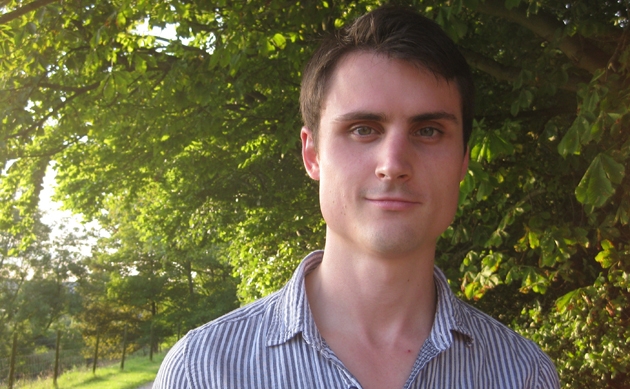
I was introduced to this piece by my composition tutor, Silvina Milstein, in 2009 when I was a Masters student at King’s College London. The music really struck me with its jolting aural acrobatics, and finely-tuned textures. It’s nearly 40 years old now, which means I wasn’t around to hear its premiere, but I think it sounds fresh even today.
The composition is basically a series of dances crafted from variations on the opening theme. It’s Goehr writing in what I find to be his most engaging style, with a strong sense of playfulness underpinning what’s really quite serious music. He has a beautiful grasp of orchestral colours ranging from richly detailed sprinkles of piccolo and harp, to some pretty barbaric blasts in the percussion and heavy brass at the end of the seventh variation.
Goehr’s harmonies in this piece sound almost classically tonal (it feels as though the music is in a particular key) but it comes from somewhere else, usually drawing on serial techniques (founded on the early 20th century music of Schoenberg and co.). Goehr’s use of dance rhythms is similarly double-edged, as he subtracts or adds a beat here and there, compensating for it later, to construct a style of music that sounds somehow irregular, asymmetrical, and balanced at the same time. I like the way it draws you in, pretending to be something well-mannered and responsible, and gradually giving its full passion away, only to peter out desperately in the final movement, marked Pochissimo meno mosso – even the use of that phrase, roughly translating as “slow down just a very small amount” seems designed to avoid resolving the drama of the piece.
This music has relatives in lush, evocative film scores, or in 19th-century Romantic symphonies, with its arcing melodies in the ‘cello in Variation 4, and pervasive sense of musical drama. Having said that, Goehr spreads his music out across the orchestra in such a way as to seemingly deconstruct it, breaking it down just enough for it to feel delicate and unstable, but not so much as to destroy it altogether. I imagine a painted canvas, suspended and lit from behind by bright sunlight that squeezes through the tiny imperfections in the paint, splitting apart what is otherwise a unified object, in unexpected ways.
Considering it was written in 1974, this music is radically different to that of Goehr’s European contemporaries; it’s certainly more obviously related to traditional symphonic music. I think it’s for this reason that Goehr is sometimes overlooked as a conservative, or as being too heavily rooted in arcane musical arguments. In his defence, I think this music is adventurous, highly individual, and treads a fresh path between the abstract sonic architecture of the European avant-garde and the more popular, possibly more approachable, dramatic music of the classical tradition, and of theatre and film.
-- Jacob Thompson-Bell
An audio excerpt of Metaphorphosis/ Dance is available via the Collection catalogue
Jacob Thompson-Bell is a British composer and artist – he is one third of the group Collectives and Curiosities. His music has been performed by acclaimed ensembles and soloists, including Susan Milan’s Debussy Ensemble and Odaline de la Martinez’s Lontano.
Forthcoming projects with Collectives and Curiosities include an audio-visual installation at BLANKPACE gallery in Manchester, and participation as Members in the LSO Soundhub 2012 – 2013; whilst solo projects include a commission for the RNCM Symphony Orchestra and Alexandre Bloch.
Jacob also produces The Sampler for Sound and Music, and teaches theory at the Royal Northern College of Music, where he is working towards a PhD in musical composition.
jacobthompsonbell.wordpress.com
collectivesandcuriosities.wordpress.com
